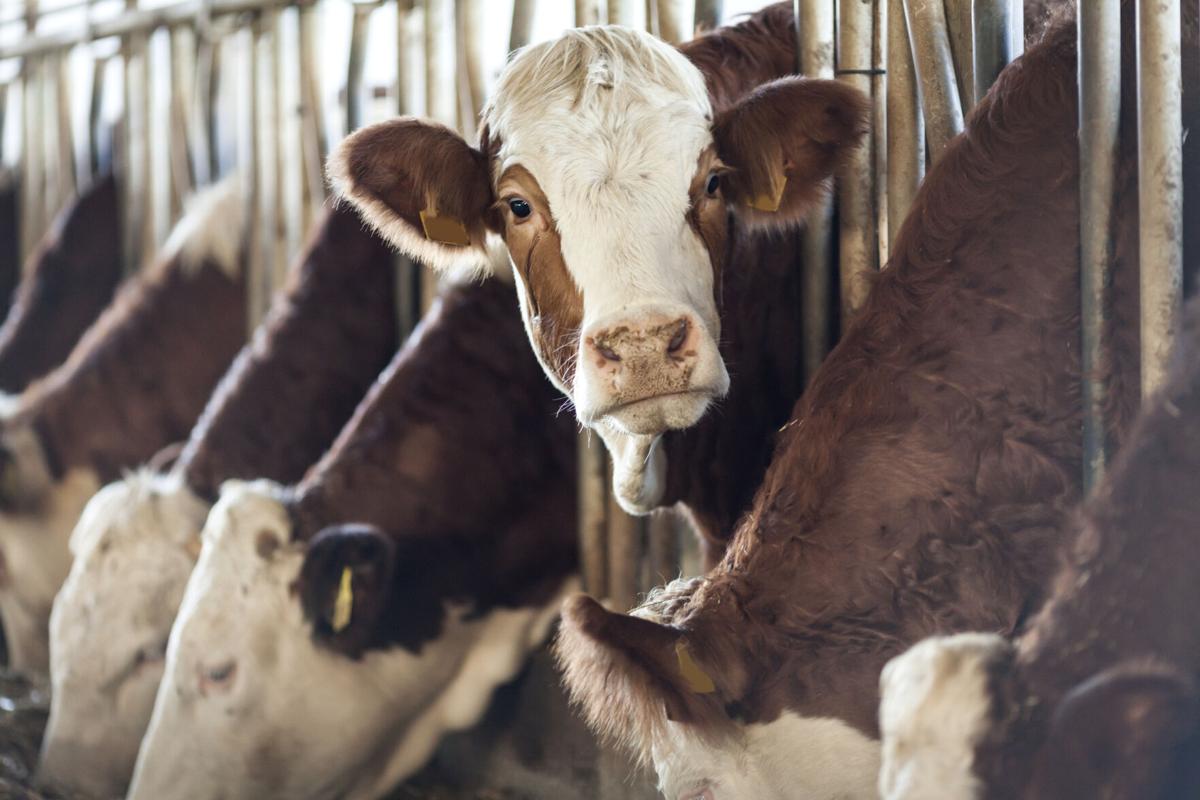Mastitis and can become the source of infection to the herd 7. The most-reported predisposing factor for SCM at farm level was the unhygienic environment abnormally large udder teat injury udder wound unclean milkers hand and mismanagement of milking machine 5 12.
The final model identified four variables as potential indepen- Results dent risk factors for SCM of dairy cows Table 3.

Predisposing factors of mastitis disease in dairy farming. The prevalence and risk factors associated with subclinical mastitis in crossbred Friesian cows in selected dairy farms were studied using California Mastitis Test CMT. Some of the common signs and symptoms include. The act of pulling the teats is not pleasurable and can easily cause undesirable stress during milking.
Mastitis causes higher economic losses in milk production as a result of the infected quarters inflammation. The objectives of the study were to estimate the prevalence of mastitis identify the cow-and herd-level potential risk factors and isolate Staphylococcus aureus one of etiological. Some recommendations were forwarded for improved control of mastitis in the region.
These were a history of previous clinical mastitis b pendulous Characteristics of study cows type of udder c no grass feeding and d BCS 25 or less. Mastitis is the most prevalent infectious disease of adult dairy cattle. Introduction Mastitis inflammation of mammary gland causes a great deal of loss or reduction of milk yield to influence the development of the dairy industry.
These factors are number of livestock climate social culture milk distribution systems farmers education farming management are important factors implicate subclinical mastitis case 8. Mastitis in dairy cattle affected by many predisposing factors. ISSN 1652-6880 ISBN 978-91-576-7379-4 This thesis describes some factors associated with mastitis in Swedish dairy herds and with udder health of first-parity dairy cows.
Despite this the national and regional milk supply was low due to lack of market awareness 1 lack of nutrients and disease in animals where mastitis was among the aforementioned constraints of production 3. The dairy farms were physically inspected for cleanness handling milking procedures and other factors associated with mastitis. Here for the first time in over 10 years we updated the bacterial findings in clinical mastitis in Swedish dairy cows.
Mastitis is a disease of major economic importance in dairy industry worldwide. Risk factor analysis revealed that milking mastitic cows last using a clean udder drying towel for each cow and previous history of mastitis were significantly associated with presence of. Mastitis is an important disease for dairy cows kept under an extensive management system.
Mastitis in dairy cows can manifest in a number of ways ranging from mild to severe. Active cases of mastitis showing visible sign of The inoculated plates were then incubated aerobically inflammation on the udder and changes were also. This study is indicated Staphylococcus species as the major bacteria isolated from mastitic milk.
It is of particular concern in developing countries like Ethiopia where milk and milk products are scarce. Prevalence Risk Factors and Major Pathogens in Dairy Farms of Holeta Town Central Ethiopia agar base enriched with 7 defibrinated bovine blood. Again transition cows are critically dependent upon good feed intake after calving to minimize the severity of negative energy and protein balance that predisposes to common postpartum disease events.
Ambo district California mastitis test dairy cows mastitis prevalence risk factors. Such stress can lock the flow of oxytocin the milk let down hormone and subsequently retaining of milk which is another predisposing factor in mastitis. Risk factor analysis revealed that milking mastitic cows last p0002 using a clean udder drying towel for each cow p0033 and previous history of mastitis p0046 were significantly associated with presence of mastitis.
Mastitis is one of the most important infectious diseases and one of the diseases that causes the greatest use of antibiotics in dairy cows. Therefore updated information on the bacteria that cause mastitis and their antibiotic susceptibility properties is important. Due to poor cure rates with antibiotic treatment and due to their contagious nature S.
The odds of clinical mastitis were lower in herds where heifers were purchased in the last year old cows 4 y and quarters not showing teat injury. Risk factors like breed age parity lactation stage previous history of mastitis housing conditions milking hygiene and general management conditions. Dairy producers are well aware of negative impacts due to clinical mastitis on that cows performance and potential for continued milk production and.
Non-aureus staphylococci were the most frequently isolated pathogens from the clinical mastitis cases and causing most of the intramammary infections. Epidemiological studies of risk factors for bovine mastitis. Inadequate sanitation of dairy environment poor animal health serv- ice and lack of proper attention to health of the mammary glands were important factors contributing to high prevalence of mastitis.
It is a complex disease of multifactorial etiology caused. Some other risk factors that. The udder was examined clinically using visual then through.
Bovine mastitis leads to a decrease in milk production increases culling rate incurs medical costs and often leads to severe deaths from infections. Its occurrence is determined by risk factors like age parity milk yield lactation stage and tick infestation. The current study has shown a relatively high prevalence of subclinical mastitis with CNS as predominant bacteria.
Aureus infections are seen as particularly dangerous and culling may be the most effective means of control in some cases. This study warrants further study on the. The degree of infection and symptoms will depend on a number of factors which include cows immunity pathogens present environmental conditions climatic conditions and nutrition among others.
Pulling also results in teat injury which further makes the animal to withhold milk. The presence of chronically infected cows in a dairy herd is a well-recognised risk factor for mastitis.

Preventing Mastitis In Heifers Main Edition Lancasterfarming Com

Tidak ada komentar